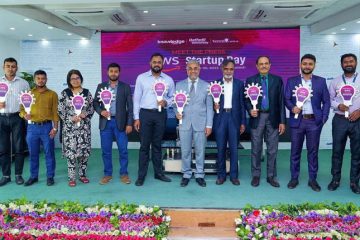As power plants go green, Japan’s solar cell panel developers are expanding their focus from residential applications to deployments on a grander scale, targeting 1GW-class production within a few years.
Sanyo Electric Co. Ltd and Nippon Oil Corp. have jointly launched Sanyo Eneos Solar to target the solar power plant market. The parent companies are equal capital partners in the venture.
On its own, Sanyo Electric has pursued development of what it calls heterojunction with intrinsic thin-layer (HIT) solar cells for the residential market. The technology places an amorphous silicon layer atop a single-crystal silicon wafer. A 10cm x 10cm prototype is said to have achieved a 22.3 percent conversion ratio; a 1,300cm² module offers a ratio of 20.6 percent, yielding what Sanyo believes is the highest-efficiency solar cell to date for residential purposes
HIT’s conversion ratio serves the residential market’s need for high efficiency in a small footprint, but its relatively high cost prices it out of the power-plant market, where low-cost power generation is more important than a space-saving design. Thus, Sanyo Eneos is pursuing a dual-layer (tandem) thin-film process that uses chemical vapor deposition to build a silicon layer on a glass substrate. The process requires only a fraction of the silicon needed for HIT’s silicon wafer-based solution, according to the company.
The new venture has dual-layered (tandem type) solar cells in production and expects to offer solar cells with 10 percent conversion efficiency for 80MW-class production in 2010, with support for power plants that deliver 1GW/year targeted for 2015 and 2GW/year by 2020.
Sanyo Electric established an Advanced Solar Plant R&D Center in April 2008 to accelerate thin-film solar cell production speed tenfold and to raise conversion efficiency above 12 percent. Associated R&D activities are under way.
Nippon Oil, for its part, is leveraging its business contacts to court developers of solar power plants in oil-producing regions such as the Middle East.
Target: 1GW output
Another developer pursing the power plant business is Sharp Corp., which has been producing thin-film solar cells for 160MW annual output since October. Production output of 1GW/year is expected by April 2010.
Kaneka Corp. also started thin-film solar cell production last year. Current production to support 70MW/year is expected to ramp to 150MW by 2010 and 1GW by 2015. Kaneka’s special sauce is a transparent film that is placed between an amorphous silicon layer and a multicrystalline layer to widen the absorption band. Efficiency is said to be a relatively high 12 percent.
Manufacturing equipment company ULVAC, meanwhile, has delivered a turnkey system for thin-film solar cells to Taiwan’s NexPower Technology. The equipment produces single-layer, amorphous-silicon cells offering 7 percent conversion efficiency, as well as a tandem-type solution, using amorphous silicon and small-crystal silicon, that provides conversion efficiency of 9 percent.
Some manufacturers are looking to sell system solutions for solar power plants. Among them is Toshiba, whose Transmission Distribution and Industrial Systems group established a Photovoltaic Systems Division in January to court large-scale solar power plant projects. Toshiba’s revelation that the solar cell panels themselves might be sourced from outside the company suggested that it would take a systems design approach to the market. For example, it might design a system that embeds its own Super Charge Ion Battery Li-ion secondary battery technology.
Toshiba aims to bring the division’s annual sales to 200 billion yen ($2 billion) by 2015. The company estimates the total global market for industrial solar power generation systems at 1.2 trillion yen ($12 billion) this year, expanding to 2.2 trillion yen ($22 billion) by 2015.
Silicon solar cell providers are not the only companies courting the industrial market. Showa Shell Sekiyu, for example, produces chemical-based solar cells and is targeting 1GW-class capability by 2011.











